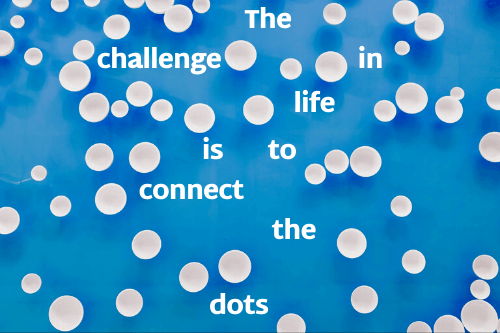
YouTube / iTunes / Spotify / Radio Public / Pocket Casts / Google Podcasts / Breaker / Overcast
Listen to ArtisanEnglish.jp posts & lesson intros here.
Phrase: Connect the dots
Remember those connect-the-dots puzzle games you’d get in colouring books when you were a kid?
I always enjoyed doing them, especially the complicated ones where the numbers went up to over 100.
I remember Christmas or Easter-themed colouring books with Rudolph, the Red-nosed Reindeer or rabbits.
They were great fun.
I thought I had left all that connecting the dots behind once I came of age, but alas, I was sadly mistaken.
The phrase connect the dots means to gather information from different sources and put it all together into a coherent whole.
In life and the Internet, connecting the dots takes on a whole different meaning.
You spend much of the time gathering information from different places and the rest of the time trying to piece it all together.
Both life and the Internet do not come with instruction manuals.
It’s taken me four+ years to build my online teaching business, and it has been a constant struggle with technology.
Like or follow ArtisanEnglish.jp on social media.
Let me give you a word of advice.
When someone says, ‘Oh, it’s easy. It only takes five minutes!’ THEY ARE LYING!
Nothing takes five minutes.
It’s a constant learning process to connect the dots so that everything works the way it should – or at least the way I think it should.
Finally, once you have connected all the dots and crossed all the Ts, someone comes along and rearranges them again, or if they are truly evil, they renumber them at the same time. Argh!
Some people are good at connecting the dots, and others don’t have a clue.
We tend to think that those who are good at it are clever or intelligent.
That may play a role in it, but connecting the dots also requires a whole lot of luck and determination.
Flesch-Kincaid Readability Test
This post is understandable by someone with at least a 7th-grade education (age 12).
On the Flesch-Kincaid reading-ease test, this post scores 73.
The higher the score on a scale of 0 – 100, the easier the passage is to read.

